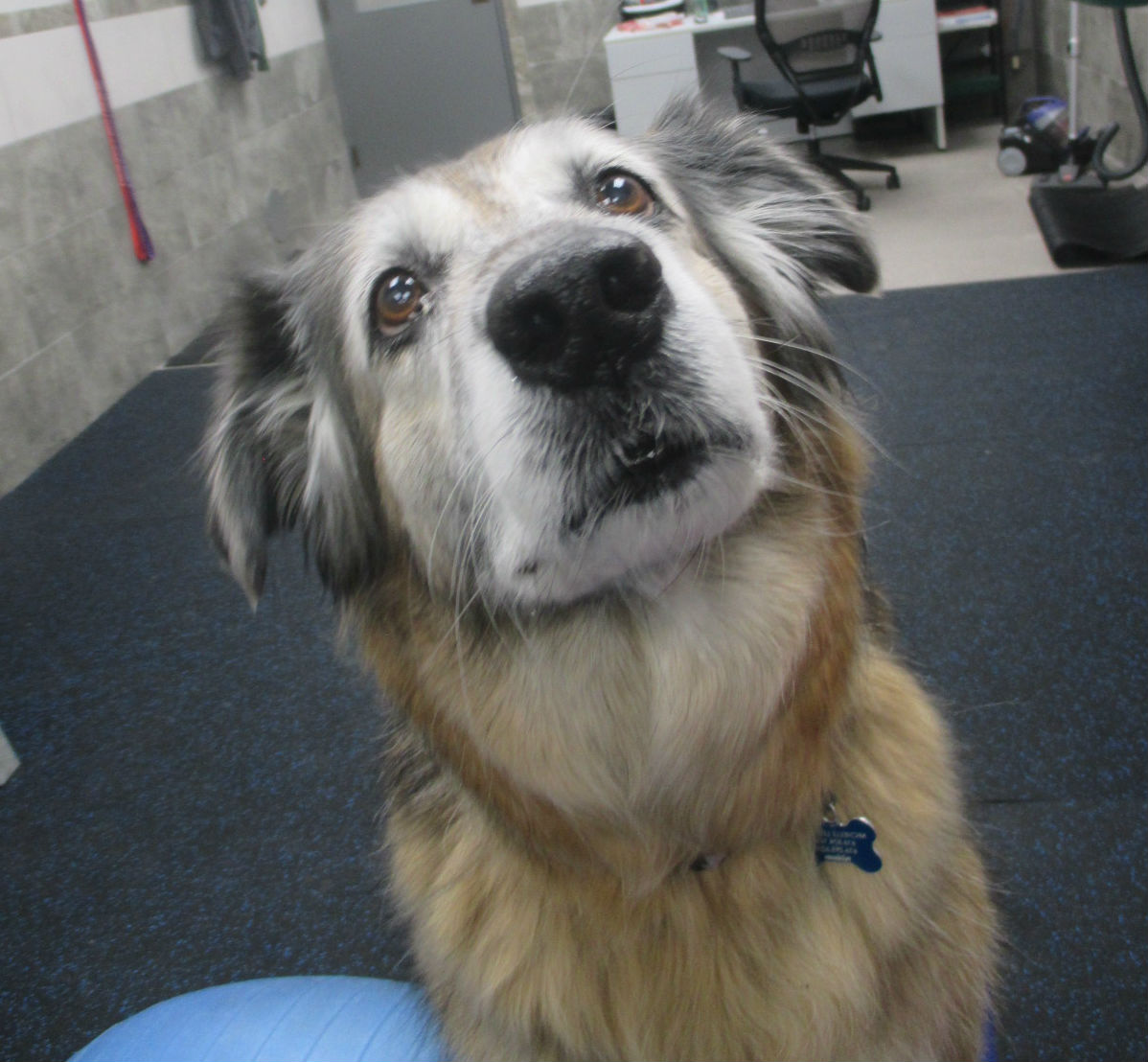
CHFA's rehab gives senior dogs a new "leash" on life
Owning a senior pet is a rewarding experience. It’s meaningful to watch your dog’s muzzle become grayer over the years as they mature from rambunctious, puppy-like behavior to being a calm, quiet canine companion. But the other side of senior dog ownership is seeing a beloved pet go through the natural challenges of aging: sore muscles and joints, more frequent illness, vision and hearing loss, and other health issues. When your dog is still loving life but having a tougher time getting around, your vet might recommend an appointment with certified canine veterinary rehabilitation nurse Emily Harkness at CHFA.
 At CHFA’s veterinary rehabilitation facility, Emily and director of veterinary rehabilitation Dr. Greg Paplawsky treat not only senior dogs but also dogs recovering from injuries or surgery, dogs with obesity or chronic health problems, and even cats. When a dog is referred to the facility, Dr. Paplawsky “takes measurements of the joint angles, flexion, and extension—and then he also measures the muscle girth, the circumference of that muscle and he compares that to the other side,” said Emily. “A lot of times there will be discrepancies in the rear limbs where they'll favor one, and you'll be facing some muscle atrophy. So then he writes up his report that comes to me, and then I set up an exercise program that helps then shift weight, for example to the right rear. And then I work on building muscle to that area to even it out.”
At CHFA’s veterinary rehabilitation facility, Emily and director of veterinary rehabilitation Dr. Greg Paplawsky treat not only senior dogs but also dogs recovering from injuries or surgery, dogs with obesity or chronic health problems, and even cats. When a dog is referred to the facility, Dr. Paplawsky “takes measurements of the joint angles, flexion, and extension—and then he also measures the muscle girth, the circumference of that muscle and he compares that to the other side,” said Emily. “A lot of times there will be discrepancies in the rear limbs where they'll favor one, and you'll be facing some muscle atrophy. So then he writes up his report that comes to me, and then I set up an exercise program that helps then shift weight, for example to the right rear. And then I work on building muscle to that area to even it out.”
The treatments that take place at the facility include an underwater treadmill, an obstacle course, puzzles, laser therapy, and massage. But a big part of Emily’s treatment of senior pets involves helping pet owners make adjustments at home so that their aging dogs have an easier time getting around, such as special harnesses or rolls of yoga mats that can be cut to a custom size and shape so pets don’t slip on hardwood or laminate floors.
The underwater treadmill provides a two-fold approach to improving a dog’s mobility. “I like to use the buoyancy to make them feel like they weigh less,” said Emily. “But I'm actually using the resistance of the water to build muscle, because they still have to pull through that water which is more viscous than air.”
A first try at the treadmill can be confusing for some dogs, so Emily often gets right into the treadmill with the dog, standing to the side of the belt and holding on to the dog’s harness until they get into the rhythm of it. She also smears a little dab of peanut butter or cheese on the front of the treadmill to give some extra incentive.
Massage and laser therapy are other veterinary rehabilitation tools Emily uses with senior pets. “It’s an anti-inflammatory-type system without adding another medication,” she said.
Overcoming obstacles
Emily likes to use the obstacle course for all of her able-bodied patients. “I use Cavaletti rails,” she said. “I can put those at all different heights, so a lot of my seniors, the rail might be on the ground. It is a fantastic way to get them to shift their weight because you cannot step over it without shifting to one side in order to flex your knee; and so a lot of dogs will walk really stiff kneed. So that's how I'm training them to shift their weight back to rely on the rear limbs just a little bit.”
She monitors each dog’s progress as they use the Cavalettis to watch them grow stronger or look for evidence of spinal problems or even vision changes. “I try to keep things for the first few sessions exactly the same for a senior dog so that they don't have to worry about it. But then I'll change it just slightly to see how they're doing.”
"The difference is amazing"
 Her years of service have earned Emily a loyal following. Michelle Leveque takes her dog Lucy, a rescue she estimates is around 13-14, to Emily for therapy. For years before her dog Jake passed away, she took him there too. “The difference is amazing,” Michelle said. “My husband has to help lift Lucy into the car when we’re on our way to the vet. On the way home from seeing Emily, she jumps into the car. If I hadn’t witnessed it myself, I wouldn’t believe it.”
Her years of service have earned Emily a loyal following. Michelle Leveque takes her dog Lucy, a rescue she estimates is around 13-14, to Emily for therapy. For years before her dog Jake passed away, she took him there too. “The difference is amazing,” Michelle said. “My husband has to help lift Lucy into the car when we’re on our way to the vet. On the way home from seeing Emily, she jumps into the car. If I hadn’t witnessed it myself, I wouldn’t believe it.”
Lucy uses the treadmill and receives massage therapy from Emily. “Emily has a keen eye for dogs. She would let us know, for example, when Jake was favoring his left hip. She’s an expert in watching the way dogs move and determining how it plays into their overall health.”
Laura Banbury has seen “incredible” results in her 14-year-old lab Barkley. “I’d say she’s extended his life. It’s crazy what it’s done for him.” Due to his age, Barkley doesn’t go for car rides much anymore...unless it’s to visit Emily. “He gets so excited to see her. He just loves her so much.” Barkley visits Emily once a week for massage and to work on the obstacle course. Emily also provides therapy for Laura’s younger dog, Lola, which spurs a healthy jealousy in Barkley, causing him to get up and try to disrupt Lola’s session because she’s “stealing his Emily’s attention.”
Emily says it seems as if dog owners are more invested in their pets than ever before. “It used to be you could just give them a medication and that was fine, but now they want to learn how to give a massage, or they want to know what exercises to try. And so I usually set up goals with the owner: what do you need this dog to be able to do to live its best dog life? For a lot of owners it’s simple. Their dog just needs to get up and go potty, and enjoy the yard, and then come back in. And so those are the specific areas I train and work on to get them to be able to do that.”
Call us today or visit our Patient Portal to learn how Emily can help your dog! (616) 949-0960
Barkley's love for Emily is apparent whenever he sees her.



